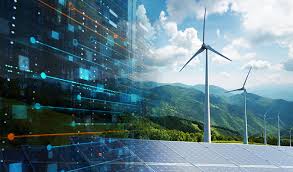info@gladsme.in
+91.8891968718
The Future of Green Energy Technologies: Innovations and Impact
The Future of Green Energy Technologies: Innovations and Impact

The world is at a critical juncture where the transition to sustainable energy sources is not just an option but a necessity. Green energy technologies are at the forefront of this transformation, offering promising solutions to reduce our carbon footprint and combat climate change. This blog explores the latest innovations in green energy technologies, their impact on the environment, and the future of sustainable energy.
Solar Power: Harnessing the Sun
Solar power remains one of the most accessible and widely adopted forms of green energy. Advances in photovoltaic (PV) technology have significantly increased the efficiency and affordability of solar panels. Innovations such as bifacial panels, which capture sunlight on both sides, and perovskite solar cells, known for their high efficiency and low production cost, are pushing the boundaries of what solar energy can achieve.
Wind Energy: Capturing Nature's Kinetic Force
Wind energy is another pillar of the green energy revolution. Modern wind turbines are larger, more efficient, and capable of generating more power than ever before. Offshore wind farms are particularly promising, as they can harness stronger and more consistent winds at sea, providing a reliable source of renewable energy.
Hydroelectric Power: Utilizing Water Flow
Hydroelectric power is one of the oldest and most established forms of renewable energy. Innovations in this sector include small-scale hydroelectric systems and pumped-storage hydropower, which can store energy for use during peak demand periods. These advancements are making hydroelectric power more versatile and accessible.
Geothermal Energy: Tapping Into Earth's Heat
Geothermal energy harnesses the heat from within the Earth to generate electricity and provide heating. Enhanced geothermal systems (EGS) are a cutting-edge technology that allows for the extraction of geothermal energy from dry rock formations, significantly expanding the potential for geothermal power generation.
Energy Storage: The Key to Consistency
One of the biggest challenges with renewable energy is its intermittent nature. Energy storage technologies, such as advanced batteries, flywheels, and compressed air energy storage, are crucial for maintaining a consistent energy supply. These systems store excess energy generated during peak production times and release it when demand is high.
The Role of Smart Grids
Smart grids are revolutionizing the way we distribute and manage electricity. By using digital technology to monitor and manage the flow of electricity, smart grids can optimize energy usage, reduce waste, and integrate renewable energy sources more effectively. This technology is essential for creating a resilient and efficient energy infrastructure.
The Future of Green Energy Technologies
The future of green energy technologies is bright. Continued research and development are driving down costs and improving efficiency, making renewable energy more accessible to everyone. As global awareness and commitment to sustainability grow, these technologies will play a crucial role in achieving a greener, more sustainable future.
Green energy technologies are transforming the way we produce and consume energy. From solar and wind power to geothermal energy and smart grids, these innovations are paving the way for a sustainable future. By embracing these technologies, we can reduce our carbon footprint, combat climate change, and create a cleaner, healthier planet for future generations.
Related Blogs

The Importance of Data Structures in Software Development
Read More...
Exploring Machine Learning Algorithms: A Beginner's Guide
Read More...
The Evolution of Programming Languages: From Assembly to Rust
Read More...
Understanding Big O Notation: A Guide for Developers
Read More...Subscribe for our Newsletter
Subscribe to elevate your software game! Stay updated on the latest trends, coding insights, and exclusive promotions with our newsletter.
